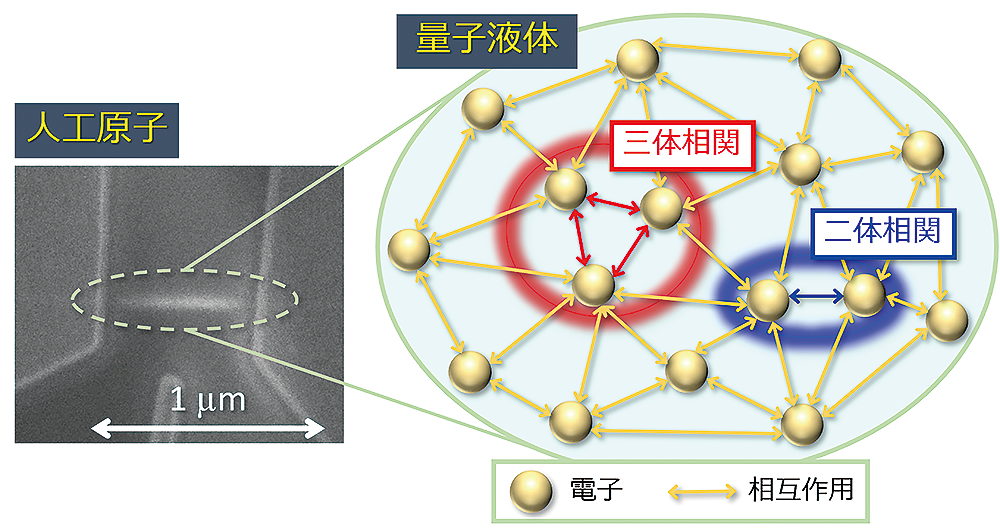DATE2022.09.08 #Announcements for Graduate Students
The Frontiers of Research Student Research: Electrons Intertwined - Quantum Liquids in Electronic Circuits
Disclaimer: machine translated by DeepL which may contain errors.
Intertwined Electrons - Quantum Liquids in Electronic Circuits
Kensuke Kobayashi (Professor, Institute for Physics of Intelligence/Department of Physics) |


Quantum liquids sometimes exhibit dramatic properties that are unimaginable when there is only one particle. For example, superconductivity and superfluidity are phenomena unique to quantum liquids, which are caused by the spontaneous creation of a state by a group of particles in unison. Such diverse properties of quantum liquid have attracted many physicists over the years. In fact, the population of free electrons in metals, which are all around us, is also a quantum liquid. Metals are good conductors of electricity and heat, and this property is the result of the free electron population behaving as a quantum liquid.
One of the factors that greatly affects the properties of quantum liquid is the Kondo effect. In addition to charge, electrons also have spin, which is a degree of freedom. The Kondo effect is an unusual phenomenon that results from the combination of the two. The characteristic feature of the Kondo effect is the strong interaction (quantum many-body effect) between electrons using spin. This phenomenon was first elucidated by Dr. Jun Kondo of Japan in 1964. The Kondo effect creates a type of quantum liquid called a "local Fermi liquid.
 |
|
| Figure: (Left) Electron micrograph of an artificial atomic circuit made of a single carbon nanotube molecule (dashed line). (Right) Schematic of a quantum liquid formed in an artificial atomic circuit. | |
We have been conducting research using tiny electronic circuits fabricated using nanotechnology. The electronic circuits called "artificial atoms" (Fig. The number of electrons in an artificial atom (about one micron in size, or 1/100 the thickness of a hair) can be controlled literally one by one. Furthermore, if the number of electrons is well adjusted, the Kondo effect can be realized. In this case, there is only one spin that causes the Kondo effect, but a quantum liquid is formed with many electrons gathered around it.
In the quantum liquid, electrons move in correlation (entanglement) with each other. The strength of this entanglement is what makes it liquid. We detected the entanglement of electrons by measuring the electrical resistance of quantum liquid formed on artificial atoms. Although the quantity called two-body correlation, which represents the entanglement of two electrons, has been known for some time, we have succeeded for the first time in detecting three-body correlation, which is the entanglement of three electrons (Figure). Furthermore, we found that the three-body correlation is stronger when the quantum liquid is in a non-equilibrium state than when it is in an equilibrium state. This means that the viscosity of the quantum liquid is higher when it is flowing (nonequilibrium) than when it is stationary, because the electrons are more strongly entangled with each other.
Although quantum liquid has been a subject of research for many years, the full picture is still unclear. In particular, our understanding of nonequilibrium states is still in its infancy. Our study shows that the use of electronic circuits allows us to approach the fundamental problem of the behavior of quantum liquids in non-equilibrium states.
The results of this research have been published in T. Hata et al . , Nature Communications 12, 3233 (2021).
Published in the September 2021 issue of Faculty of Science News
Communicating to Faculty Research Students >
<


